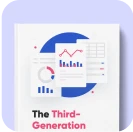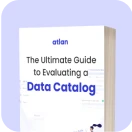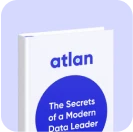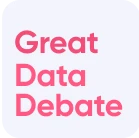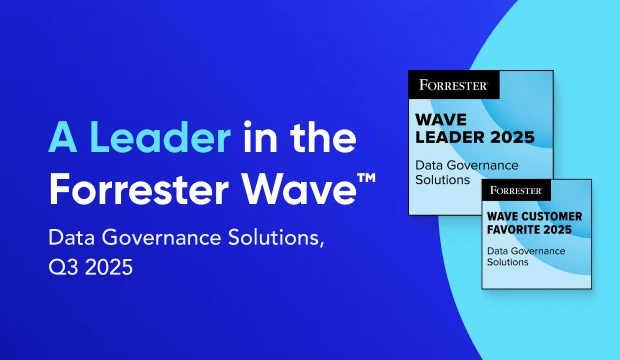Understanding the difference between a data catalog and a data dictionary is vital for effective data management.
A data dictionary captures technical metadata for individual databases, while a data catalog provides a holistic view of all metadata across an organization.
This distinction enhances data discovery, governance, and collaboration among data teams, making it crucial for modern data practices.
Quick answer:
In a hurry? We’ve summarized the essence of this article as well as what to expect from it:
- A data dictionary documents technical metadata for a specific database. Meanwhile, a data catalog acts as a unified context and control plane for all metadata.
- In this article, we’ll explore the concepts of a data dictionary and a data catalog, followed by their benefits, core features, and differences. We’ll also compare data catalog vs. data dictionary vs. business glossary.
Data catalog vs. data dictionary: The difference #
The main difference between a data catalog and a data dictionary is that a data dictionary documents technical metadata for a specific database, whereas a data catalog acts as a unified context, control, and collaboration layer of all metadata (technical, governance, operational, collaboration, quality, and usage) across your entire data ecosystem.
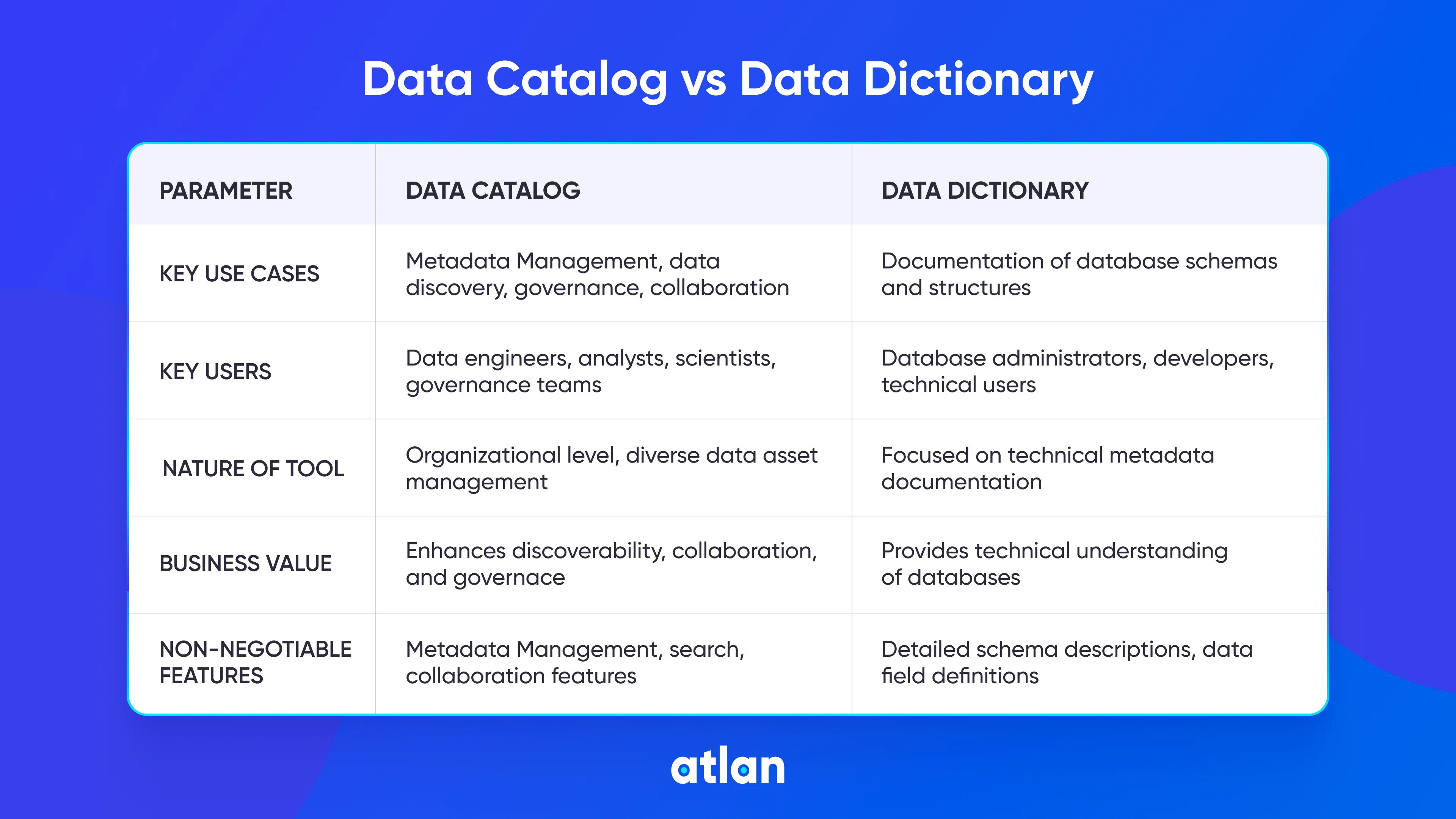
View data catalog vs data dictionary visual representation in full size.
To understand the differences between data catalog and data dictionary, read on.
Why open source catalogs didn’t work for Autodesk’s business goals #
We went through an entire deployment of an open source version… but it wasn’t sustainable as we continued to grow and grow. Atlan met all of our criteria, and then a lot more. — Mark Kidwell, Chief Data Architect, Autodesk.
Start the tour to experience Atlan ✨
Table of Contents #
- What is a data dictionary?
- What are the benefits of a data dictionary?
- What is a data catalog?
- 4 Fundamental features of a data catalog
- Data catalog vs. data dictionary vs. business glossary
- Data catalogs vs. data dictionaries in the real world
- How organizations making the most out of their data using Atlan
- FAQs about Data Catalog vs Data Dictionary
- Related reads
Data Catalog Vs Data Dictionary: Which one do you need?
What is a data dictionary? #
A data dictionary provides information and insights about your database. Consider a data dictionary to be a documentation for databases.
See How Atlan Simplifies Data Cataloging – Start Product Tour
A data dictionary provides insights on #
- Data source (data warehouse, data lakes, databases, applications)
- Tables names and descriptions
- Table relationships
- Column name and descriptions
- Permissible values for a field
- Data types
- Column nullability
- Referential constraints — foreign keys and primary keys
- Column statistics — missing values, min-max values, and histogram distribution.
- Data and time when the property was created or changed
- Data owner
- Data freshness
- Classifications (PII, GDPR, HIPAA)
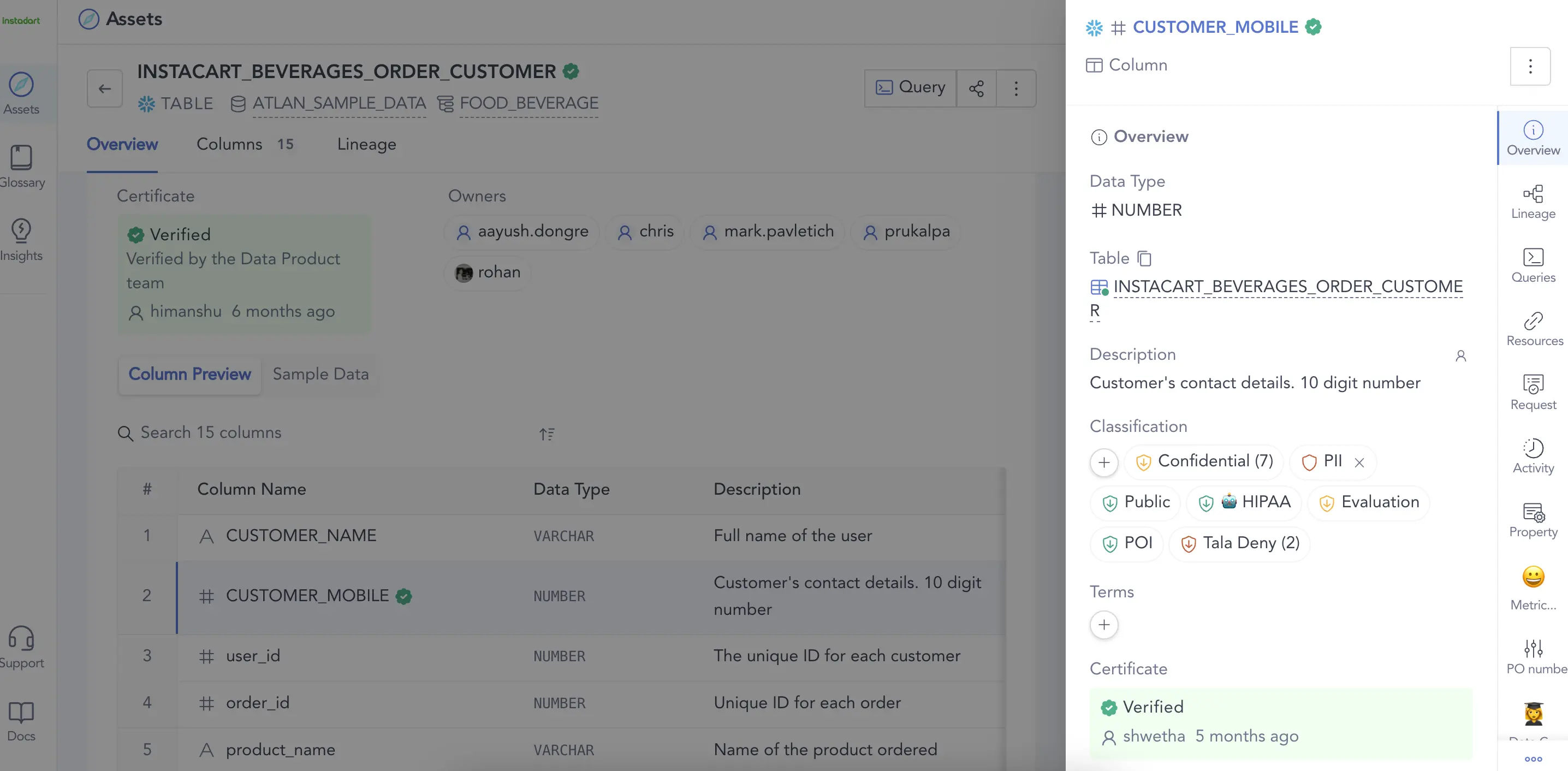
A data dictionary provides information about the database’s structure, data elements, constraints, and relationships. Image by Atlan.
What are the benefits of a data dictionary? #
The number of benefits your organization can have from a robust data dictionary is endless. Yet, let’s have a look at the top seven benefits of a data dictionary that acts as the interpreter for your databases:
- A data dictionary links physical data assets to business terms/concepts/metrics. This helps data users to understand and trust data better (improves data validity and credibility).
- Enables quick detection of anomalies and errors and hence helps keep a check on data quality.
- Checks how and where a field is referenced across the entire database.
- Provides a framework for programming and database standards to maintain data integrity.
- Helps evaluate data consistency during security and compliance audits.
- A data dictionary acts as self-serve documentation for new engineers/analysts. This greatly reduces onboarding time.
- Data dictionaries can be accessed externally through APIs for reporting and cataloging purposes.
And to learn more about each benefit in detail, check out the key benefits of a data dictionary.
What is a data catalog? #
A data catalog is an inventory of data assets across all your data sources in your enterprise. It helps organizations discover, understand, and consume data better — all in one place.
A data catalog helps find answers to: #
- What data do we have?
- Where does it come from?
- Who is the owner?
- How clean is the data & are there any gaps?
- How is it classified?
- Is the data good enough for running analysis?
4 fundamental features of a data catalog #
Fundamentally, what are the features of a data catalog? A data catalog reduces the time to insight for data users. It ensures:
- Data is made readily accessible
- Context is provided
- The data lifecycle is visible
- Access permissions are defined
Watch a demo of Atlan data catalog
1. Data catalogs make data accessible #
A data catalog automatically crawls, identifies, inventories, and classifies data assets from multiple sources. Data catalog tools allow you to run a search across data lakes, data warehouses, databases, tables, columns, SQL queries, and business glossaries.
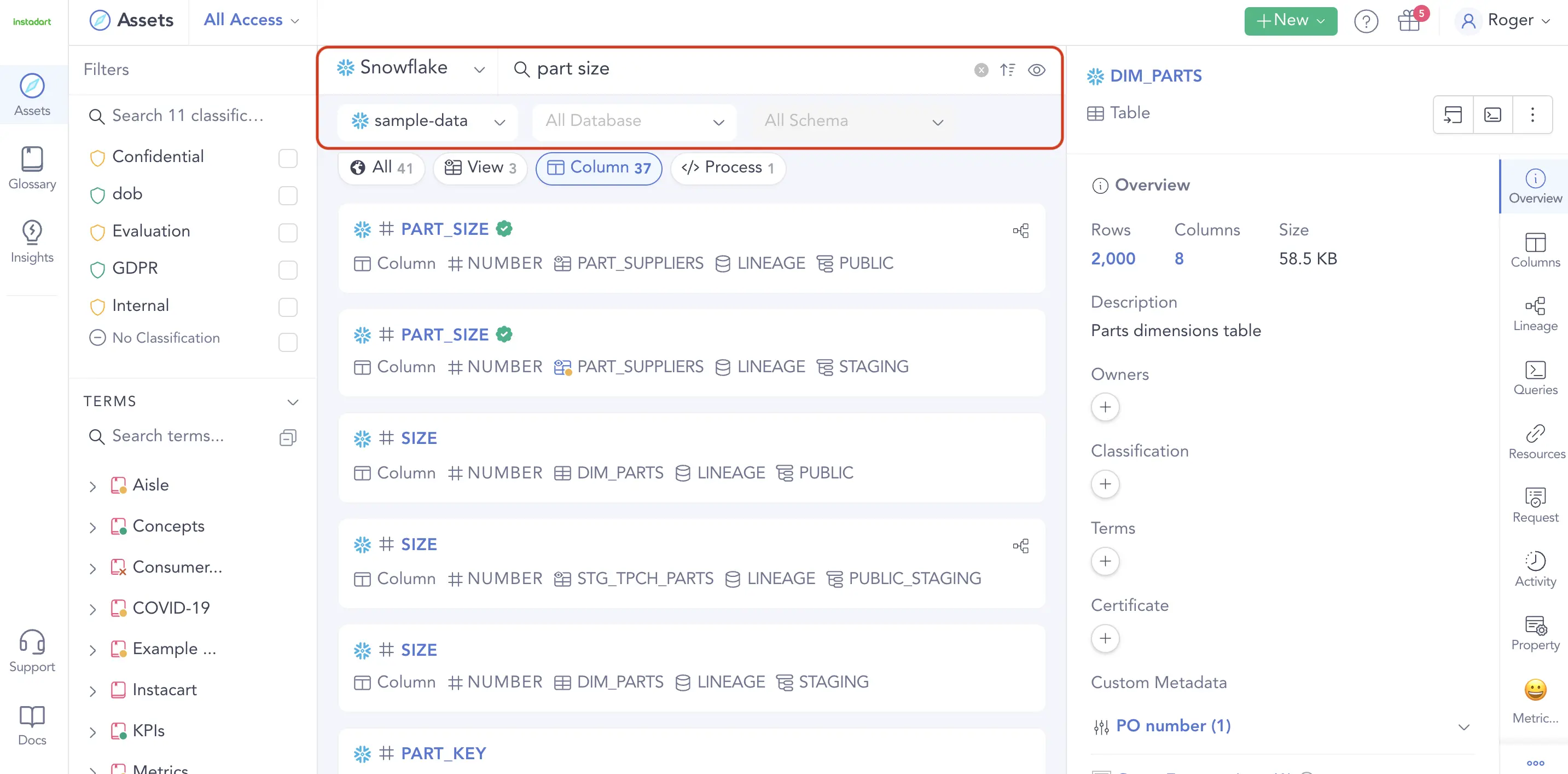
Modern data catalogs have google-like search interfaces that respond to text-based searches for data assets. Image by Atlan
2. Data catalogs provide context #
People with no context of the data can learn more about it to decide if they have the right data.
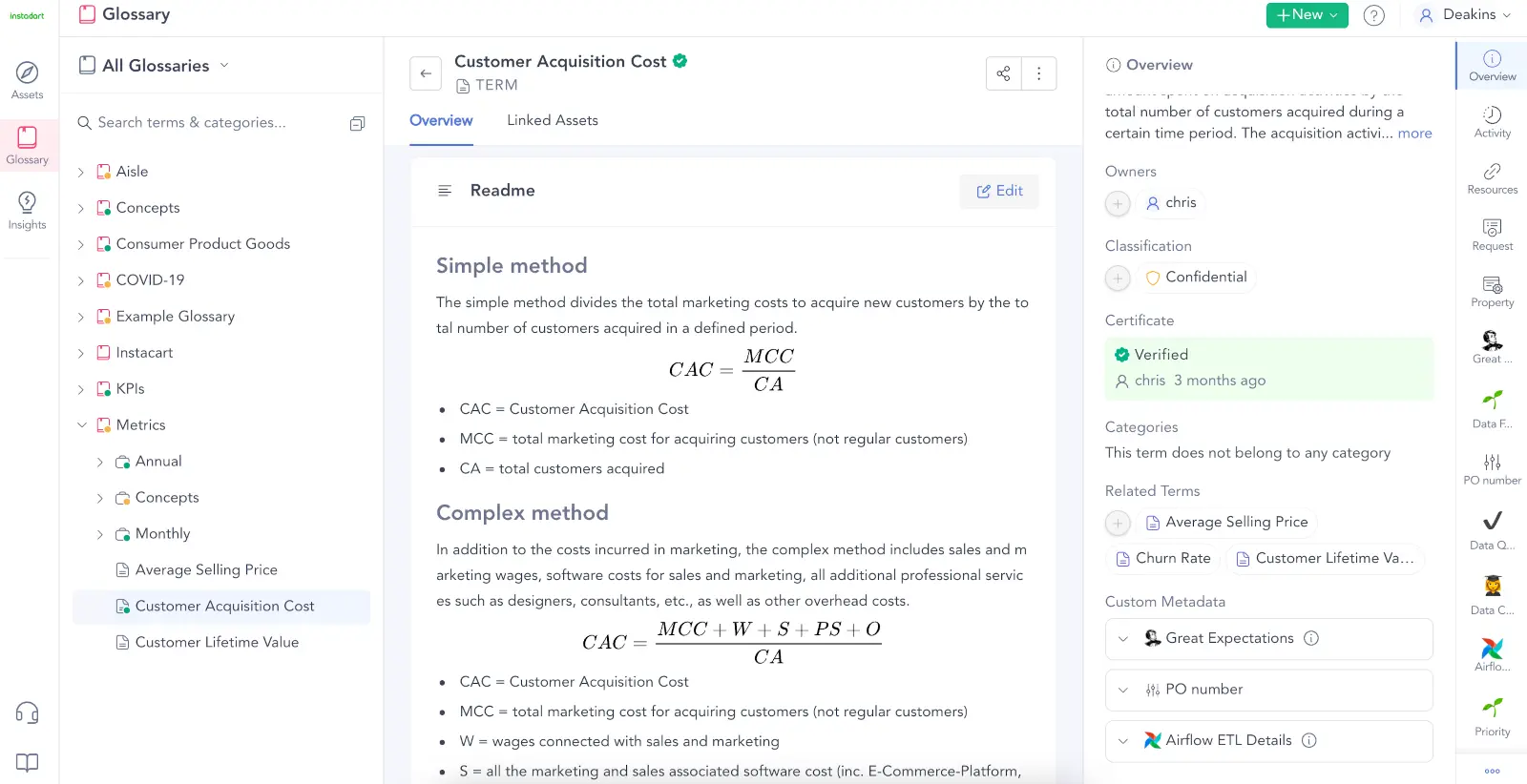
Modern data catalogs come with in-built business glossaries to ensure a common understanding of data assets and their usage across the organization. Image by Atlan
3. Data catalogs help visualize data lifecycle #
Data catalogs enable you to visualize the complete lifecycle of a data asset, its transformation, and its dependency both upstream and downstream.
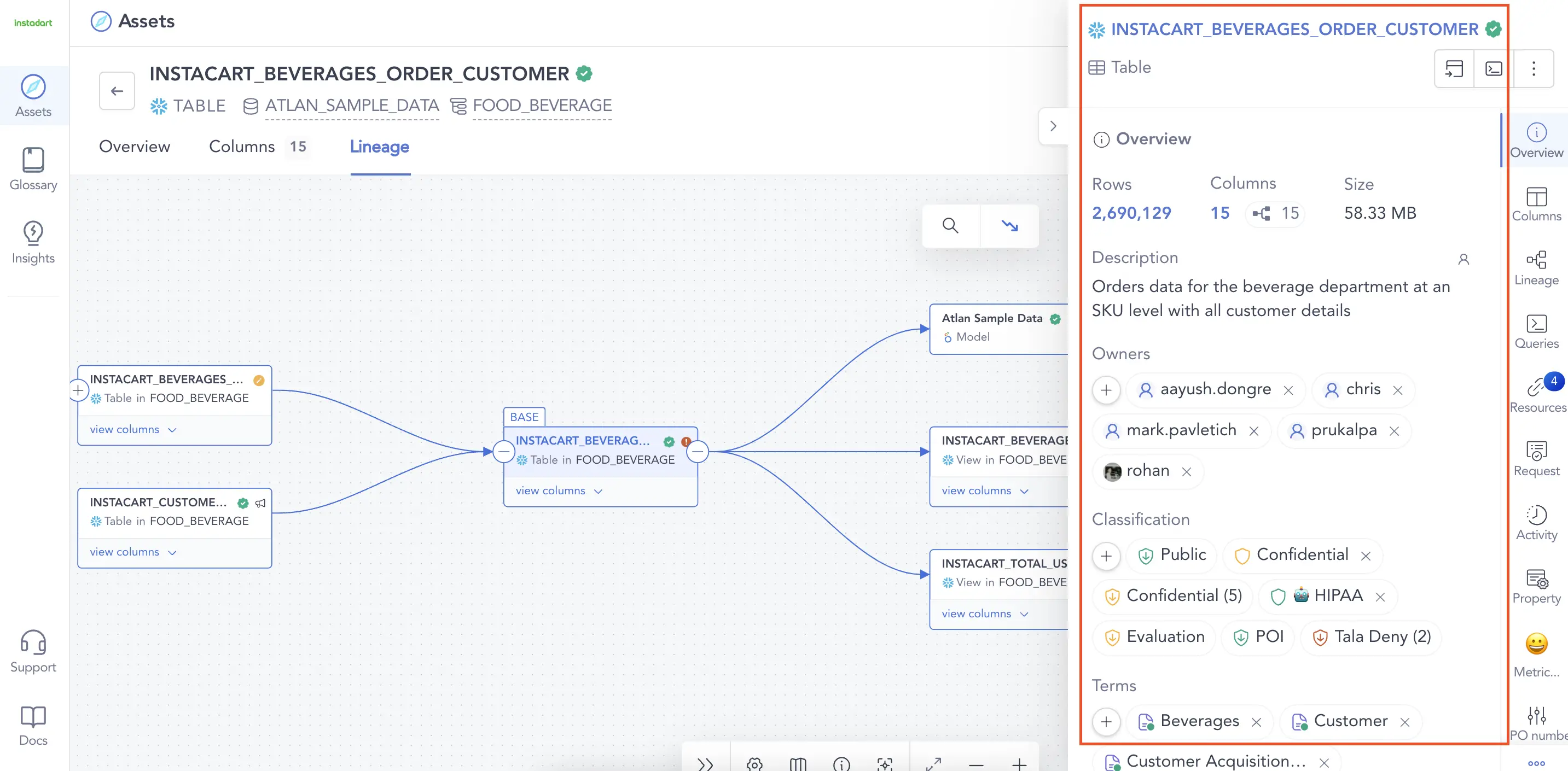
The best of modern data catalogs auto-construct the visual lineage of data to give an understanding of how data has evolved through its lifecycle and how changing the data will impact downstream. Image by Atlan
A Guide to Building a Business Case for a Data Catalog
Download ebook
4. Data catalogs enable data governance #
A data catalog helps enforce robust access control policies as guard rails to help you protect confidentiality and comply with various data protection regulations.
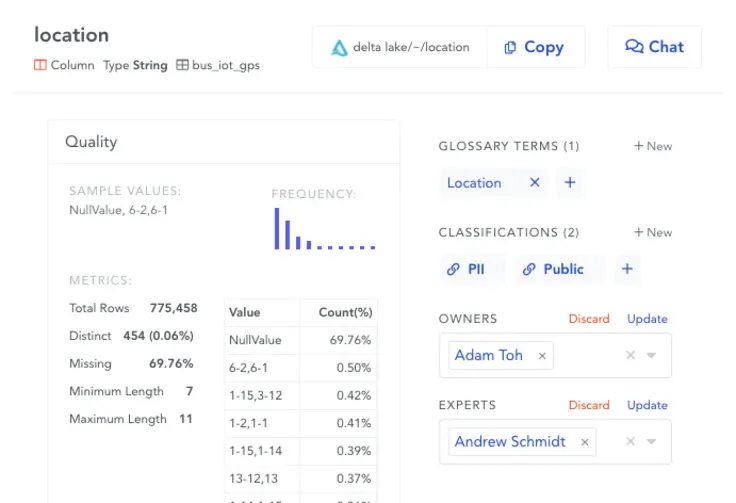
Modern data catalogs help deploy best-in-class data access governance without compromising on data democratization. Image by Atlan
Data catalog vs. data dictionary vs. business glossary #
While evaluating the need for data catalogs and data dictionaries, people often stumble upon business glossaries. Here’s how the three are primarily different.
The main difference between data catalog, data dictionary and business glossary is that A data dictionary holds the technical metadata for a database, a business glossary pulls together a common understanding of business terms and concepts, whereas a data catalog is a unified access, control, and collaboration layer that spans all metadata across your data estate.
Think of it this way, a data dictionary helps understand and trust data in databases better, a business glossary provides a common language for the organization when it comes to business concepts and metrics, and a data catalog helps find, understand, trust, and collaborate on data.
And to explore more about how a business glossary differs from the other two, check out the business glossary vs. data catalog.
When does an organization need a data catalog? #
It’s safe to say, deploying a data catalog is a right of passage for an organization to be truly data-driven. As a business, you can collect all the data that you want and set up best-in-class infrastructure to store that data, but data in itself is nothing. Just numbers.
You need the right data to reach the right person at the right time - for it to really move the needle on your business. Modern Data Catalogs are being designed to ensure that the complexities and scale of data do not deter “non-data” folks from using data in their day-to-day work.
→ Read in-depth about data catalogs.
Data catalogs vs. data dictionaries in the real world #
As more and more data teams are feeling the need for and adopting data catalogs, the difference between a catalog and a dictionary is fast vanishing—and becoming more complementary—because catalog tools now crawl and inventory data dictionaries for metadata. Data dictionaries are now an integral part of a data catalog.
Just in case, if you are evaluating a data catalog, data dictionary, and metadata management for your team, do take Atlan for a spin.
Atlan is a modern data catalog built on the premise of embedded collaboration that is key in today’s modern workplace, borrowing principles from GitHub, Figma, Slack, Notion, Superhuman, and other modern tools that are commonplace today.
How organizations making the most out of their data using Atlan #
The recently published Forrester Wave report compared all the major enterprise data catalogs and positioned Atlan as the market leader ahead of all others. The comparison was based on 24 different aspects of cataloging, broadly across the following three criteria:
- Automatic cataloging of the entire technology, data, and AI ecosystem
- Enabling the data ecosystem AI and automation first
- Prioritizing data democratization and self-service
These criteria made Atlan the ideal choice for a major audio content platform, where the data ecosystem was centered around Snowflake. The platform sought a “one-stop shop for governance and discovery,” and Atlan played a crucial role in ensuring their data was “understandable, reliable, high-quality, and discoverable.”
For another organization, Aliaxis, which also uses Snowflake as their core data platform, Atlan served as “a bridge” between various tools and technologies across the data ecosystem. With its organization-wide business glossary, Atlan became the go-to platform for finding, accessing, and using data. It also significantly reduced the time spent by data engineers and analysts on pipeline debugging and troubleshooting.
A key goal of Atlan is to help organizations maximize the use of their data for AI use cases. As generative AI capabilities have advanced in recent years, organizations can now do more with both structured and unstructured data—provided it is discoverable and trustworthy, or in other words, AI-ready.
Tide’s Story of GDPR Compliance: Embedding Privacy into Automated Processes #
- Tide, a UK-based digital bank with nearly 500,000 small business customers, sought to improve their compliance with GDPR’s Right to Erasure, commonly known as the “Right to be forgotten”.
- After adopting Atlan as their metadata platform, Tide’s data and legal teams collaborated to define personally identifiable information in order to propagate those definitions and tags across their data estate.
- Tide used Atlan Playbooks (rule-based bulk automations) to automatically identify, tag, and secure personal data, turning a 50-day manual process into mere hours of work.
Book your personalized demo today to find out how Atlan can help your organization in establishing and scaling data governance programs.
FAQs about Data Catalog vs Data Dictionary #
1. What is the difference between a data catalog and a data dictionary? #
A data catalog serves as a comprehensive inventory of all data assets across an organization, facilitating data discovery and governance. In contrast, a data dictionary documents technical metadata for specific databases, detailing data elements and their relationships.
2. How can a data catalog improve data discovery in an organization? #
A data catalog enhances data discovery by providing a unified view of all data assets, enabling users to search and access relevant data quickly. It organizes metadata, making it easier for teams to find and utilize data effectively.
3. What are the key features of a data dictionary? #
Key features of a data dictionary include documentation of data sources, table names, column descriptions, permissible values, data types, and referential constraints. It serves as a reference for understanding the structure and relationships within a database.
4. How do data catalogs support data governance and compliance? #
Data catalogs support data governance by enforcing access control policies and ensuring compliance with data protection regulations. They provide visibility into data lineage and usage, helping organizations maintain data integrity and security.
5. What types of metadata are included in a data catalog? #
A data catalog includes various types of metadata, such as technical metadata, business metadata, operational metadata, and governance metadata. This comprehensive view helps organizations manage and utilize their data assets effectively.
6. How do data catalogs and data dictionaries complement each other in data management? #
Data catalogs and data dictionaries complement each other by providing different perspectives on data. While a data dictionary focuses on technical details of specific databases, a data catalog offers a broader view of all data assets, enhancing overall data management and usability.


